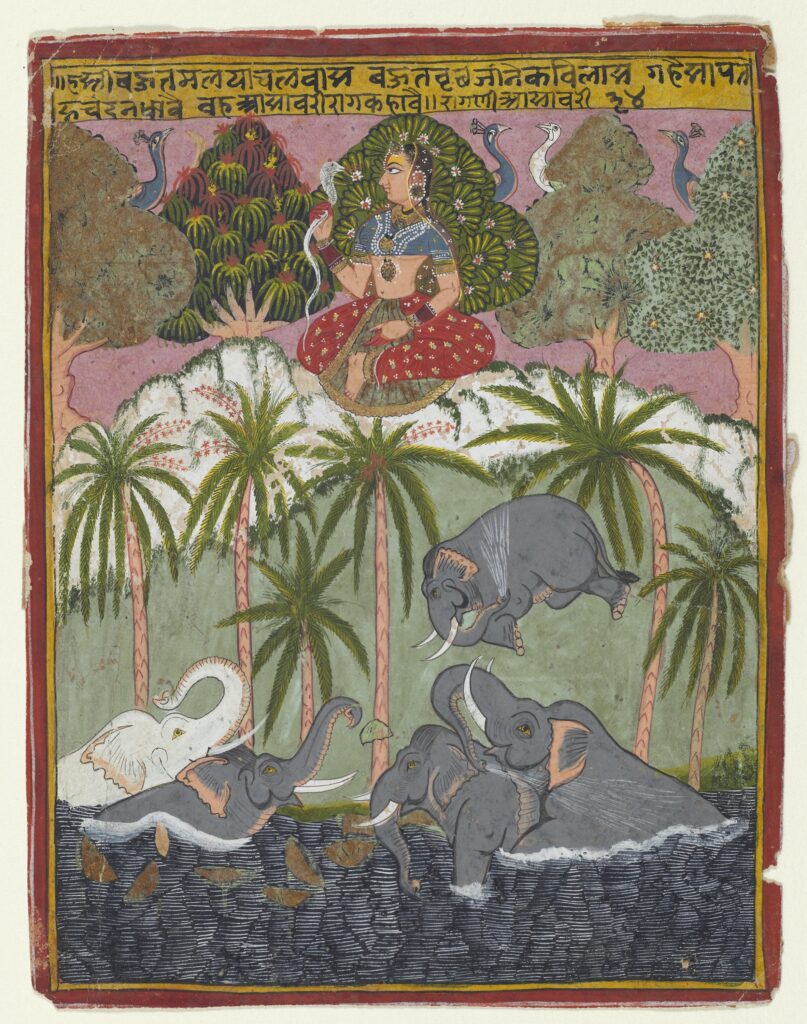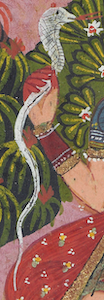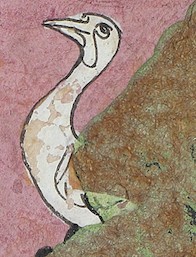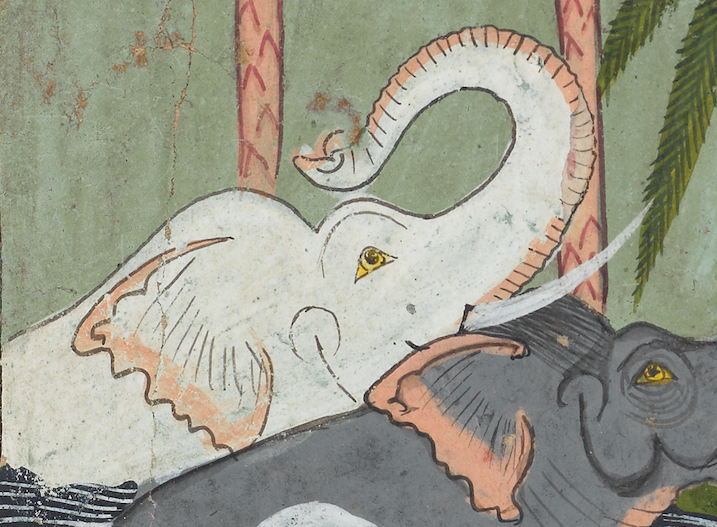Asavari Ragini

Asavari Ragini
India, Rajasthan, Mewar, ca. 1690
Opaque watercolor and gold on paper
Lent by the A.M.S. Foundation for the Arts, Sciences, and Humanities, courtesy of the Arthur M. Sackler Gallery, Smithsonian Institution, MLS1863
This Asavari Ragini painted in 1690 is from the Mewar court in Rajasthan in Northwest India. Typical of Asavari Ragini iconography, this painting depicts a beautiful woman alone in the wilderness charming a snake. This was painted a century after the previous Bundi Court example, and offers a different representation of the woman. Instead of an ascetic woman, as shown in the Bundi painting, this is a courtly woman or princess, perhaps just momentarily retreating in the wilderness. Her identity is evidenced by her appearance; she is dressed in fine embroidered clothing, is adorned with golden jewelry, and her hands are painted with red dye, a common practice of ornamentation for elite Indian women. She is depicted as an ideal feminine beauty. Her beauty is also emphasized by the natural environment around her. The blooming flowers on the tree behind her follow and highlight the contours of her body.

White animals, or those with albinism, are rare and regarded as extremely beautiful and auspicious in South Asia. The presence of these animals echoes the woman’s beauty and indicates that she is so alluring she can summon even the most elusive of lovely creatures.
Unlike the earlier Bundi example, the woman in the Mewar painting is depicted as a princess and not as a spiritually enlightened ascetic (or possible yogini). Even though the woman charms a snake and other animals, the artist suggests that the potency of her mesmerizing power lies in her rare and exquisite beauty. Complementary to the woman’s elegant dress, the precious white animals in the scene conjure royal associations. Elephants play in the water and peacocks emerge from the trees, and among them is a white elephant and a white peacock. In South Asia, white animals are incredibly rare and auspicious, symbols of good fortune and abundance. The image suggests that the woman’s charm and loveliness is so great that she can attract and tame even the most elusive and beautiful animals.
In this painting, the artist visually interprets the mood (bhava) of Asavari Ragini differently than the Chunar artists. The female figures in both are mysterious, enticing, and supernaturally charismatic, but they create a sense of longing in the presumed male viewer through different means. Whereas the frighteningly alluring ascetic elicits longing through enticement amid a sense of danger, the courtly woman in the Mewar painting creates a sense of longing in a much more approachable and playful manner through her royal beauty and delightful charm. The painting’s inscription indicates that the woman awaits her lover, but the Asavari Ragini’smood of longing is also powerfully expressed in the viewer’s attraction to and longing for the enchanting woman depicted. The difference in artistic interpretation between the two Asavari Ragini examples is also illustrated in the animals that surround the women. The ascetic lures and powerfully controls wild and venomous animals; conversely, the courtly woman in the Mewar example communes with the most fabled and most beautiful of creatures tamed at court.

“A tribal woman sitting on the Malaya Mountains, overlooking the sandalwood forest, elephants and the flora and fauna of the region. Dressed in her traditional attire, she sings the Asavari Raga while she awaits her lover.” (Translated by Arastu Gupta, New Delhi, India, 2020.)

